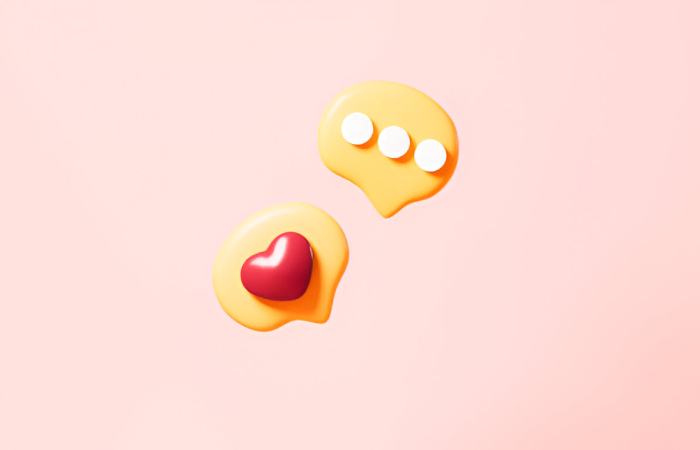What are the Love Languages – You can show love to your partner daily, but do you try to ensure you express it how your partner needs to feel it? Even love sometimes gets lost in translation, especially when two lovers speak different love languages.
Table of Contents
What are the Five Love Languages?
The five love languages are different expressions and ways of giving or receiving love: words of affirmation, quality time, gifts, acts of service, & physical touch. Not everybody shows love in the same manner; neither do they receive love in the same manner. Dr. Gary Chapman developed the concept of love languages in his book The Five Love Languages: The Secret to Love That Lasts, where he calls these five unique ways of communicating love categories he drew from his experience in marriage and language counseling.
We can all relate to most of these love languages, but each of us has one that tells us the most,” says marriage and family therapist Sani Motamide, Psy.D. “Discovering your and your partner’s primary love language and speaking it regularly can better understand each other’s needs and support mutual growth.”
Overview of the Five Love Languages
Here’s an overview of each of Chapman’s five love languages:

#1. Words of Affection
For those who regard words of affection as the expression of love, verbal declarations such as “I love you,” “thank you,” phrases that boost self-esteem verbally, and frequent digital correspondence, including texting and social networking, matter a lot to them.
“The most essential factor for them is to verbalize affection in writing as well as through words and feel heard and valued,” shares Fareeha Mahmood Syed, MFT, CFLE, couples therapist
#2. Quality Time
Persons whose love language is quality time feel loved more if their partner wants to spend time with them and is always ready to spend time with them. They especially like it when active listening, eye contact, and being fully present are priorities in the relationship. “This love language is about giving that special someone your undivided attention, without the distraction of TV, phone screens, or other outside interference. They have a strong desire to spend time with their partner, have meaningful conversations, or share fun activities,” says Mahmoud Sayed.
#3. Acts of Service
If your love language is a form of service, you appreciate when your partner goes above and beyond to make your life relaxed. It’s things like carrying your soup when you’re sick, making your coffee in the morning, or dry cleaning when you have a hard day at work.
“This language is for people who trust that actions speak louder than arguments. Unlike those who prefer to hear how much you care about them, people on this list love to be shown how much they’re appreciated. Doing the littlest and biggest tasks to make their lives easier or more comfortable is something these people appreciate,” says Mahmoud Sayed.
#4. Gifts
Gifts are a straightforward love language: You feel loved when people give you “visible tokens of love,” as Chapman calls them. It’s not so much about the monetary value, but the symbolic thinking behind the item. People with this style understand and appreciate the process of gift-giving: careful thought, intentional selection of items that represent the relationship, and emotional benefits of receiving the gift.
“People whose love language is receiving gifts enjoy receiving something physical and meaningful,” says Mahmoud Sayed. “The key is to give meaningful things that matter to them and reflect their values, not necessarily yours.”
#5. Physical Touch
People whose love language is touch feel loved when they receive physical signs of affection, such as kissing, holding hands, cuddling on the couch, and having intercourse. Physical intimacy and touch can be incredibly affirming and serve as a strong emotional bond for people with this love language. Motamedi points out that the roots go back to our childhoods. Some people only feel deep affection and love from their parents when they hug, kiss, or touch them. People who express appreciation through this language, when they accept it, feel appreciated when they are hugged, kissed or caressed. They enjoy the warmth and comfort that physical contact provides,” says Mahmoud Sayed.
Most Frequently Used Love Language
Chapman studied the results of 10,000 people who took his online test in 2010 and found that words of affirmation were the most popular language but by a thin margin. In 2018, Hinge analyzed their dating app and found quality time was the most common love language.
“I believe it also depends on gender, culture, customs, and values,” Mahmud-Syed notes. “Certain love languages prevalent in the West are much less common in non-Western cultures. For instance, in my South Asian culture, it is uncomfortable and not well appreciated to praise someone directly. However, praising that person to someone else is highly valued and appreciated when they hear what you say about them. Public display of affection by spouses or romantic partners is a major taboo.”
Are There Other Love Languages?
According to Chapman’s agenda, the original 5 love languages have remained the same; however, that does not mean there aren’t other ways to express & receive love.
This is just one agenda, and there have been several proposed additions over the years, such as ideas like shared experiences and emotional safety. The more we think about ourselves and what fills our connection tank, the more ways we have to help our spouse love us in the way we maximum want to be loved.
How to Identify Your Love Language
In a relationship, do you feel loved if your partner:
- Tells you, “I love you,” or praises something you did?
- Surprise you with an expressive gift?
- Plan a trip with your partner?
- Run the errands or do the laundry?
- Holds your hand as you walk?
By asking yourself these questions, you might find an indication of your love language. You might even be able to consider what you request from others or reflect on how you love them back.
Love Languages in Everyday Life
According to Chapman, these love languages also apply to relationships between parents & children, among coworkers & friends. For example, if your child’s main love language is words of assertion, they’d like to hear verbal tribute or “I love you.” It’s definite: A coworker might feel more valued if you use one love language instead of another.
Your love language can also change sometimes. For example, if you had a terrible day at work, you would probably want your partner to hug you instead of saying something positive to you.
The most important thing is to communicate regularly and ask what your companion needs to feel valued, overheard, appreciated, & loved. After you have checked in, you can put the information learned into practice.
Criticism of the Love Language Theory
Fast-forward today, almost 30 years after the book’s publication. As popular as the concept is, many people have since pointed out problems with love languages. Some people can use the love languages theory as a personality test. However, Chapman’s point is that we should adapt to our spouse’s love language, not demand they use ours.
Indeed, a recent study discovered that just because couples are aligned in each other’s love language wavelength does not necessarily mean that it makes for a successful and happy relationship. In fact, the study found that couples who shared the same love language were no happier than those who didn’t, meaning that one should master fluency in the love language system and adapt it to what the partner needs at the moment is more valuable than just depending on a dominant love language type.
“It encourages codependency, and partners do not grow the autonomy and authenticity they must have in a relationship, Motamedi adds. A relationship is a place of transformation and growth. In limiting each other with some love language, we do not allow room for change to happen.”
The broad concepts, which lean on practical simplicity, can also be too simple because they leave out the culture, trauma, and intergenerational differences within nuanced communities. There is a need for an acknowledgment that human connections are a complicated reflection of their childhood wounds and attachment style. Motamedi says: “I think that once an individual heals the wounds from their previous relationships and gains a healthy attachment style, so will their love language.”
Generally, it’s essential not to use love languages as a panacea to fix problems. We require more skill sets than we have in our toolkit to deal with issues that may exist below the surface of our relationship.
Finally
Love languages are helpful tools in helping us to communicate and express ourselves better to each other, but they should not be the end-all and be-all solution for happiness. Instead, it should work as a starting point that sets pairs on a journey to meet each other more profoundly and self-regulate better. But the work should not stop there.
Also Read: Coquette Fashion


